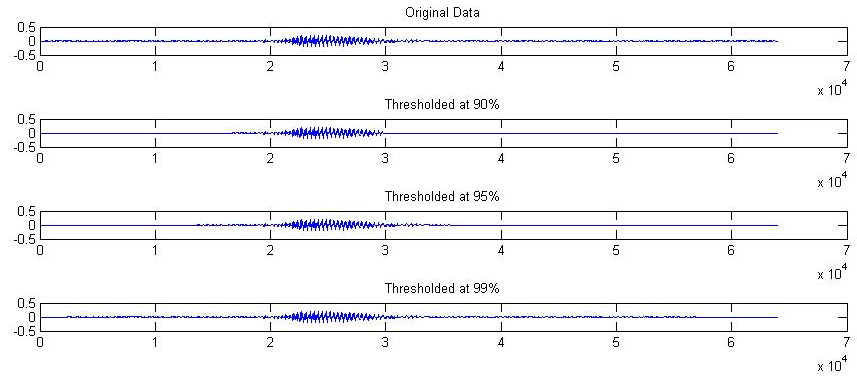| << Chapter < Page | Chapter >> Page > |
Prior to signal comparison, the signals must first be aligned. The first step to alignment is to extract the relevant signal from the entire data segment. To perform this initial processing we smooth the absolute value of the data, and find the maximum of the smoothed data. Given the index of the maximum, we extend the bounds of our hypothesized signal outwards until the amount of energy within our bounds exceeds a threshold percentage. Energy is defined as the L2 norm of the data signal, shown in (5.1). This procedure is encapsulated in the function “extractSignal”.
| (5.1) |
The threshold percentage was determined empirically. Figure 5.1 shows examples of the signal that was extracted for different threshold percentages. Portions of the data that were edited out are replaced with 0. As one can see, thresholding at 90% removes relevant information from the data, and thresholding at 99% retains much of the irrelevant values in the data. We set the energy threshold to 95%.

Figure 5.1: Results of identifying the signal in the data segment based on different energy percentage thresholds. The original data shown is of Nicholas stating the word “one”. Portions that are removed from the signal are set to 0.

Notification Switch
Would you like to follow the 'Analysis of speech signal spectrums using the l2 norm' conversation and receive update notifications?